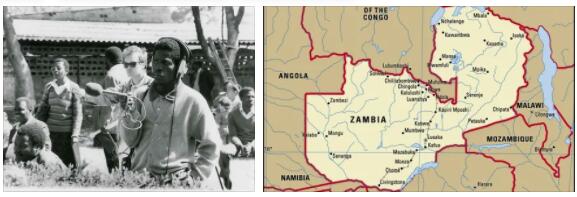Swaziland is one of the smallest countries in Africa and is owned by Traveler often overlooked – wrongly. For holidaymakers, Swaziland offers a pleasant climate in the higher elevations and, with its cultural diversity, landscape and wildlife, can certainly be compared to other African countries. Trips to the five national parks are worthwhile, especially the safaris to the rare black rhino make your stay in Swaziland an unforgettable one experience become.
The small landlocked country between South Africa and Mozambique celebrates its national holiday every year on September 6th. On that day in 1968, independence from Swaziland was declared. Swaziland is a classic monarchy with a king. His daughter will rise to the throne after him.
About 90 percent of the population are Bantu. The remaining 3 to 5 percent are divided between minorities living in Swaziland. As in many countries in southern Africa, the people living in Swaziland are predominantly Christians. It is assumed that it should be between 60 and 70 percent of the total population. The indigenous religions of the respective peoples are also widespread.
What you immediately notice as a visitor is the very well-developed road system. There are roads even in the higher elevations in the high mountains, but these are very slow to drive due to the curves. If you want to travel the country by train, you will be disappointed. The rail network is only used for freight transport. There is no passenger transport.
The country received food aid from various international organizations for many years. Agriculture currently feeds a large part of the population of Swaziland. The people grow exclusively for themselves and their families (subsistence farming). The harvest is not sold to the market or for export.
Area: 17,364 km² (land: 17,204 km², water: 160 km²), one of the smallest countries in Africa.
Population: 1.37 million (July 2011, COUNTRYAAH.COM), Swaziland has a relatively small population in an African comparison. 97% black Africans. The largest people are the Swazi, other people are Zulu, Tsonga and Shangaan, a minority of 3% are Europeans.
Population density: 79 people per km².
Population growth: 1.204% per year (2011, CIA)
Capital: Mbabane (around 60,000 residents).
Here is a list of cities in Swaziland, ordered by population.
Highest point: Emlembe, 1,862 m
Lowest point: Great Usutu River, 21 m
Form of government: Swaziland has been a parliamentary monarchy since 1973, which is represented in the Commonwealth. The constitution dates from 2003. The Parliament (Libandla) consists of the National Assembly with 65 members and the Senate with 30 members. Swaziland has been independent of Great Britain since September 6, 1968.
Administrative divisions: 4 districts: Hhohho, Lubombo, Manzini and Shiselweni.
Head of state: King Mswati III, since April 25, 1986
Head of government: Prime Minister Absolom Themba Dlamini, since November 26, 2003
Language: the official languages in Swaziland are Siswati and English.
Religion: 40% Zionists (mixture of Christian motives and ancestor worship), 20% Catholics, 10% Muslims, 30% others (e.g. Anglicans, Baha’i, Methodists, Mormons, Jews).
Local time: CET + 1 h
In Swaziland there is no change between summer and winter time.
The time difference to Central Europe is +1 h in winter, in summer there is no time difference to Central Europe.
Telephone area code: 00268 or +268
Internet ID:.sz
Mains voltage: 220 V, 50 Hz
Map and geographical representation of Swaziland
The Kingdom of Swaziland is the second smallest country on the African continent after Gambia. With an area of 17,363 sq km, it is slightly smaller than Slovenia. The neighboring countries of the landlocked country are Mozambique in the east and the South African provinces of Mpumalanga in the north and east and KwaZulu-Natal in the south. The total length of the state border is 535 km, of which 105 km are shared with Mozambique and 430 km with South Africa.
Here you can find a detailed topographic map of Swaziland.
Swaziland is divided into four geographical zones. To the east are the up to 600 m high Lubombo Mountains in a north-south direction. The lowland (Lowveld) west of it has an average height of 200 m. The climate is dry. The low field is mainly used for sugar cane cultivation. The Mittelland (Middle Veld) has an average height of 700 m, makes up 26 percent of the total territory and consists of fertile hills and valleys. The highlands (Highveld), which has an average height of 1,300 m and merges westwards into the heavily forested South African Drakensberg. The highest point in Swaziland is the 1,862 m high Emlembe in the northwest on the border with South Africa. The lowest point in the country is the Great Usutu River at 21 m. The Lusutfu River that flows through the country is the largest and longest river in Swaziland.




